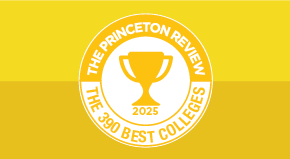Chiropractic
Overview
A Chiropractor treats disorders that affect the nerves, bones, joints, and muscles. It does not involve drugs or surgery, and is hands-on (“Chiropractic” derives from the Greek terms for “practical hand”), meaning a Chiropractor manually adjusts a patient’s body. Chiropractic is actually not an undergraduate major. Like medical school, Chiropractic school requires that you complete four years of college before you can be admitted. (Some schools require only two years of study; most require four.) You can then look forward to a four- or five-year program of study leading to Chiropractic certification.
Chiropractic is rooted in the philosophy that health is determined in large part by the nervous system, and that to solve a health problem the whole body must be evaluated and treated through nutrition, exercise, and emotional care. Some states allow Chiropractors to include herbal drug regimes in their treatment, but most require that Chiropractors work in tandem with family doctors to give their patients the care they need. As a Chiropractor you’ll learn how to manipulate muscles, joints, and the spine to solve a variety of problems such as lower back pain, arthritis, and carpal tunnel syndrome. You’ll learn the art of therapeutic massage and soft-tissue therapies.
Chiropractic is a growing field; almost 25 million Americans visit Chiropractors each year. If you’re interested in helping people feel better using non-drug methodologies, Chiropractic might be the career path for you.
SAMPLE CURRICULUM
Anatomy
Biomechanics
Chiropractic Procedures
Clinical Orthopedics
Community Health
Histology
History of Chiropractic
Imaging Interpretation
Normal Radiographic Anatomy
Nutritional Assessment
Pathology
Pharmacotoxicology
Physics of Clinical Imaging
Practice Management
HIGH SCHOOl PREPARATION
GRADUATE PROGRAMS & CAREERS
Explore Colleges For You
Connect with our featured colleges to find schools that both match your interests and are looking for students like you.
Top Schools for Game Design
Ready to create the next great app? Launch your gaming career at one of these top 50 programs.
Best 390 Colleges
168,000 students rate everything from their professors to their campus social scene.
Get Started on Athletic Scholarships & Recruiting!
Join athletes who were discovered, recruited & often received scholarships after connecting with NCSA's 42,000 strong network of coaches.



